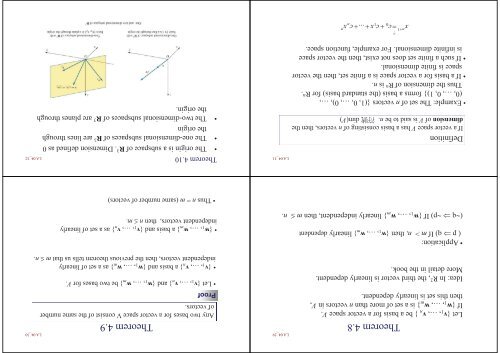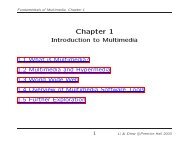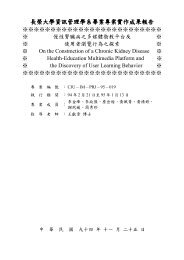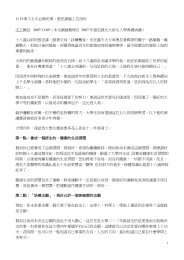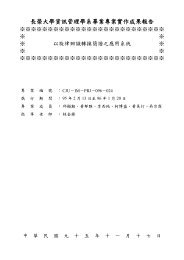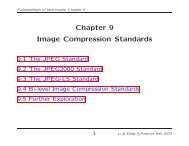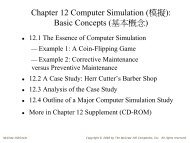Chapter 4 General Vector Spaces Face Recognition ( á¹¢å ± å½å¬)
Chapter 4 General Vector Spaces Face Recognition ( á¹¢å ± å½å¬)
Chapter 4 General Vector Spaces Face Recognition ( á¹¢å ± å½å¬)
You also want an ePaper? Increase the reach of your titles
YUMPU automatically turns print PDFs into web optimized ePapers that Google loves.
Theorem 4.8Let {v 1 , …, v n } be a basis for a vector space V.If {w 1 , …, w m } is a set of more than n vectors in V,then this set is linearly dependent.LA 04_29Idea: In R 2 , the third vector is linearly dependent.More detail in the book.• Application:( p q) If m > n, then {w 1 , …, w m } linearly dependent(q p) If {w 1 , …, w m } linearly independent, then m n.LA 04_31DefinitionIf a vector space V has a basis consisting of n vectors, then thedimension of V is said to be n. dim(V)• Example: The set of n vectors {(1, 0, …, 0), …,(0, …, 0, 1)} forms a basis (the standard basis) for R n .Thus the dimension of R n is n.• If a basis for a vector space is a finite set, then the vectorspace is finite dimensional.• If such a finite set does not exist, then the vector spaceis infinite dimensional. For example, function space.?n 1x c c x ... 01cnxnTheorem 4.9Any two bases for a vector space V consist of the same numberof vectors.LA 04_30Proof•Let {v 1 , …, v n } and {w 1 , …, w m } be two bases for V.•{v 1 , …, v n } a basis and {w 1 , …, w m } as a set of linearlyindependent vectors, then the previous theorem tells us that m n.•{w 1 , …, w m } a basis and {v 1 , …, v n } as a set of linearlyindependent vectors, then n m.• Thus n = m (same number of vectors)Theorem 4.10• The origin is a subspace of R 3 . Dimension defined as 0• The one-dimensional subspaces of R 3 are lines throughthe origin• The two-dimensional subspaces of R 3 are planes throughthe origin.LA 04_32


